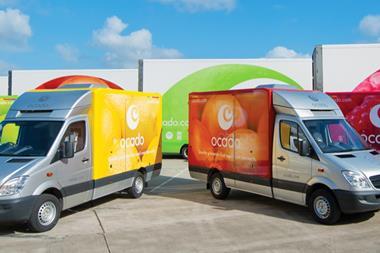
Have you ever ordered your weekly grocery shop from Amazon? For a great deal of us, the answer is probably no. Even though Amazon is by far the leader when it comes to e-commerce, its grocery delivery offering, Amazon Fresh, never really took off. In a recent poll, 78% of people said they had heard of Amazon Fresh but just 15% had used it.
Recently, the retail rumour mill has been buzzing with the news that Amazon might acquire Ocado. Amazon has been trying to expand its grocery arm for some time. It bought Whole Foods in 2017, introduced till-less stores – also called Amazon Fresh – from 2021, and it owns a 16% stake in Deliveroo. Taking on a strong UK brand is a logical next step as the business works to consolidate a hold in the grocery market.
Grocery is a market facing significant pressure from today’s economic challenges. Customer loyalty is hard to win and even harder to maintain. Tesco, Sainsbury’s and Co-op are all incentivising loyalty via reduced prices for loyalty members, but the reality is the big supermarkets are losing share to the Discounters as customers increasingly focus on price points. Latest TWC Trends figures show just 18% of consumers say they always use the same grocer – which means they’re a fickle bunch and it’s all to play for.
Read The Grocer’s analysis on how Ocado could benefit Amazon
Amazon Prime is one of the strongest retail loyalty propositions. Combine this with Amazon’s financial strength, it can offer a hefty initial discount to new customers, provide attractive cross-promotion and price match what Tesco, Sainsbury’s and Asda are offering on online grocery. This gives Amazon an advantage in today’s cost of living crisis, when consumers are making price-based decisions. The Amazon brand is built on great experience and service, but all at a compelling price point.
What would Ocado offer Amazon? Short term, it would give them another boost through increased frequency and engagement with customers. Longer term, it would reinforce its strategy of doubling down on grocery, providing best-in-class services built on its core loyalty and supply chain platforms.
In terms of engagement, Amazon will be interacting with customers on a much more regular basis. Rather than one or two orders a month, customers do grocery shopping on a weekly basis. This provides more opportunities to cross-sell and leverage Amazon Prime to drive increased loyalty, potentially loosening customers from the grip of low price.
An American giant buying a British company isn’t a new story, but it’s increasingly becoming the trend. What makes the prospect of this deal particularly fascinating is asking the question: what’s in it for Ocado? What are they getting from Amazon that they couldn’t get through independent funding and a growth strategy?
It’s not clear if this is a short-term partnership or whether they’re fully committed to the Amazon platform. Historically, Ocado has frequently moved between partners. More importantly, will this be the key to Amazon unlocking the growth it sought in grocery when it launched Amazon Fresh?



















No comments yet